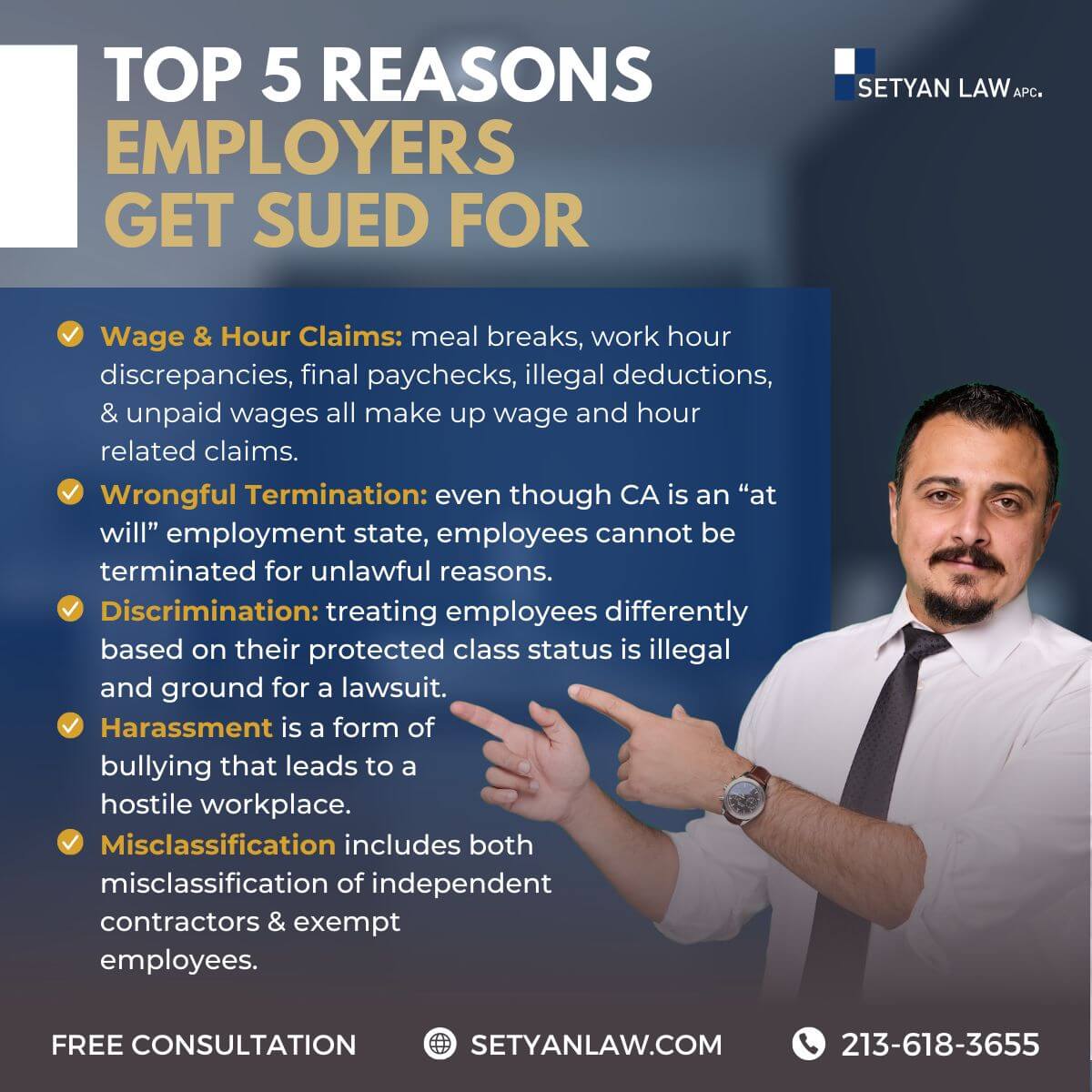Updated October 21, 2025
Furloughs vs Layoffs
In today’s unpredictable economic landscape, businesses sometimes face difficult decisions regarding their workforce. When companies experience financial hardship, they may need to implement cost-cutting measures that affect their employees. Two common approaches are furloughs and layoffs, but these terms are often confused despite having significantly different implications for both employers and employees.
Understanding the distinction between these employment actions is crucial for workers and businesses alike. Whether you’re an employee concerned about your job security or an employer contemplating workforce adjustments, knowing the specific characteristics, legal implications, and potential benefits of each option can help you navigate challenging circumstances more effectively.
Defining Furlough and Layoff
A furlough represents a temporary pause in employment where workers retain their positions but experience reduced or eliminated work hours for a specified period. During this time, employees maintain their employment status but typically receive reduced or no compensation. The key characteristic of a furlough is its temporary nature – the employer intends to bring workers back to their normal schedules once conditions improve.
In contrast, a layoff constitutes a permanent separation from employment. When an organization lays off staff, it terminates their positions completely, though the term constitutes a permanent separation from employment. When an organization lays off staff, it terminates their positions completely, though the termination occurs through no fault of the employees. Unlike furloughs, layoffs represent a definitive end to the employment relationship, requiring individuals to seek new opportunities elsewhere.
The fundamental distinction lies in continuity of employment. Furloughed workers remain on the company roster with the expectation of eventual return, while laid-off employees must completely sever their connection with the organization. This core difference influences everything from benefit eligibility to unemployment compensation and future employment prospects.
Understanding these definitions provides the foundation for examining the more nuanced aspects of each employment action. The implications extend far beyond simple terminology, affecting practical considerations for both employers and employees navigating challenging economic circumstances.
Legal Framework and Requirements
Federal Regulations Governing Furloughs and Layoffs
The legal landscape surrounding workforce reductions includes several federal regulations that employers must navigate carefully. The Worker Adjustment and Retraining Notification (WARN) Act stands as one of the most significant federal laws in this area. This legislation requires employers with 100 or more employees to provide at least 60 days’ advance written notice before implementing mass layoffs or plant closures affecting 50 or more workers.
Interestingly, the WARN Act may apply differently to furloughs versus layoffs. While layoffs clearly trigger WARN requirements when they meet the threshold criteria, furloughs might also activate these obligations if they extend beyond six months or reduce work hours by more than 50% in each month of a six-month period.
The Fair Labor Standards Act (FLSA) also plays a crucial role, particularly regarding furloughed employees. Under FLSA regulations, exempt employees who perform any work during a furlough week must receive their full salary for that week. This creates significant compliance challenges for employers implementing furloughs for salaried staff.
State-Specific Considerations and Variations
State laws often impose additional requirements beyond federal regulations. California, for example, has its own version of the WARN Act with broader coverage that applies to employers with 75 or more employees and requires notice for layoffs affecting just 50 workers. Other states have implemented similar enhanced protections.
Some states have specific provisions regarding final paycheck timing after layoffs. In California, employers must provide final wages immediately upon termination, including compensation for accrued vacation time. Failure to comply can result in waiting time penalties that accumulate daily until payment occurs.
State unemployment insurance programs also vary significantly in how they treat furloughed versus laid-off workers. While laid-off employees generally qualify for unemployment benefits in all states, eligibility for furloughed workers depends on state-specific rules regarding partial unemployment and work hour reductions.
Compliance Challenges and Best Practices
Navigating the complex legal requirements surrounding workforce reductions requires careful planning and documentation. Employers should conduct thorough legal reviews before implementing either furloughs or layoffs to ensure compliance with all applicable federal and state regulations.
Best practices include developing clear written policies regarding both furloughs and layoffs, maintaining consistent communication with affected employees, and documenting all decisions and their business justifications. Organizations should also consider consulting with employment law specialists to address jurisdiction-specific requirements and minimize legal exposure.
For employees, understanding their rights under these various legal frameworks provides essential protection. Workers facing either furlough or layoff should familiarize themselves with both federal protections and the specific regulations in their state to ensure they receive all entitled benefits and protections.
The Mechanics of Furloughs
How Furloughs Function in Practice
Furloughs operate as temporary work suspensions that can take several forms depending on the organization’s needs. Some employers implement rotating furloughs where different groups of employees take turns being furloughed, allowing the company to maintain operations while reducing overall labor costs. Others might institute organization-wide furloughs where all employees experience reduced schedules simultaneously.
The duration of furloughs varies considerably based on business circumstances. Short-term furloughs might last just a few weeks during seasonal downturns, while longer-term furloughs could extend for several months during more significant economic challenges. However, furloughs extending beyond 12 months generally transition into de facto layoffs from both practical and legal perspectives.
During a furlough period, employees cannot perform any work-related activities – not even checking email or taking phone calls. This restriction applies particularly strictly to exempt employees, as any work performed during a furlough week legally entitles them to their full weekly salary under FLSA regulations.
Different Types of Furlough Arrangements
Furloughs manifest in several common arrangements. Reduced workweek furloughs decrease employees’ scheduled hours, perhaps from five days to three or four. Intermittent furloughs alternate between regular work periods and furlough periods, such as working one month and being furloughed the next. Complete furloughs temporarily suspend all work for a defined period.
For hourly (non-exempt) employees, furloughs typically mean reduced hours or zero-hour schedules. These workers remain employed but earn wages only for hours actually worked. For salaried (exempt) employees, furloughs must generally occur in full-week increments to maintain FLSA compliance, as partial-week furloughs could jeopardize exempt status.
Some organizations implement voluntary furlough programs where employees can choose to participate, often with incentives like guaranteed return rights or continued benefit coverage. These voluntary arrangements can help reduce involuntary workforce reductions while allowing employees some agency in the process.
Employee Rights and Restrictions During Furlough
During furlough periods, employees retain their employment status but face significant restrictions. Most critically, furloughed workers cannot perform any work whatsoever for their employer – not even responding to emails or taking brief calls. Doing so could create legal liability for the organization under wage and hour laws.
Many furloughed employees maintain access to certain benefits, particularly health insurance, though specific arrangements vary by employer. Some organizations require employees to pay their portion of premium costs during unpaid furlough periods, while others may cover these expenses temporarily as a goodwill measure.
Furloughed employees generally can seek temporary employment elsewhere during their furlough period, provided such work doesn’t violate non-compete agreements or create conflicts of interest. However, accepting permanent employment elsewhere effectively terminates the furlough relationship with the original employer.
The Anatomy of Layoffs
Permanent Nature and Implementation Process
Unlike furloughs, layoffs represent permanent employment terminations, severing the relationship between employer and employee. Organizations typically implement layoffs when facing long-term financial challenges, structural reorganizations, or permanent business model changes that necessitate workforce reductions.
The implementation process generally begins with strategic planning to identify which positions or departments require reduction. Organizations then develop selection criteria, which must be non-discriminatory and consistently applied. Common selection methods include performance-based evaluations, seniority considerations, or elimination of entire departments or functions.
Once selections are finalized, employers must provide appropriate notice according to applicable laws. For covered employers, the WARN Act requires 60 days’ advance notice for mass layoffs, though exceptions exist for unforeseeable business circumstances or natural disasters. Individual notifications typically occur through private meetings with affected employees.
Types of Layoffs and Their Distinctions
Several layoff variations exist, each with distinct characteristics. Permanent layoffs represent complete terminations with no expectation of rehire. Temporary layoffs, despite the name, still terminate employment but with an expressed intention to rehire when conditions improve – though without guarantees.
Reduction in force (RIF) refers to eliminating positions due to reorganization, downsizing, or location closures, with no plans to refill those roles. In contrast, job eliminations target specific positions rather than individuals, removing the role from the organizational structure regardless of who occupies it.
Some organizations implement phased layoffs, reducing the workforce gradually over time rather than all at once. This approach can minimize operational disruption but may create prolonged uncertainty for employees. Others might offer voluntary separation packages before implementing involuntary layoffs, allowing employees to choose departure with enhanced benefits.
Post-Layoff Obligations for Employers
After implementing layoffs, employers face several important obligations. They must process final paychecks according to state-specific timing requirements, which often mandate immediate payment upon termination. These final payments typically include regular wages, accrued vacation or PTO, and any applicable severance.
Organizations must also provide information about benefit continuation options, particularly regarding health insurance. The Consolidated Omnibus Budget Reconciliation Act (COBRA) requires most employers with 20+ employees to offer continued health coverage, though employees typically bear the full premium cost plus a 2% administrative fee.
Employers should also provide clear documentation regarding the layoff, including termination letters specifying the effective date and reason for separation. Many organizations offer outplacement services to help laid-off employees find new positions, which can maintain goodwill and potentially reduce unemployment insurance costs.
Financial Implications for Employees
Income Considerations During Furloughs vs. Layoffs
The financial impact on employees differs significantly between furloughs and layoffs. Furloughed workers experience temporary income reduction or elimination but maintain their employment relationship. This situation creates uncertainty about when normal income will resume, making financial planning challenging.
Laid-off employees face complete income cessation from their former employer, necessitating immediate alternative income sources. However, this clarity allows for more definitive financial planning compared to the ambiguity furloughed workers often experience. Laid-off employees can focus entirely on securing new employment rather than waiting in limbo.
Severance packages, when offered, provide laid-off employees with temporary financial support during their transition. These packages typically correlate with length of service and may include continued salary for a specified period, lump-sum payments, or combinations of both. Furloughed employees rarely receive severance since their employment continues.
Unemployment Benefits Eligibility and Differences
Unemployment benefit eligibility varies between furloughed and laid-off workers. Laid-off employees generally qualify for full unemployment benefits in all states, provided they meet other eligibility criteria like sufficient work history and active job searching.
Furloughed employees’ eligibility depends on their specific situation and state regulations. Those with completely suspended work typically qualify for full benefits, while those with reduced hours may qualify for partial unemployment benefits. Some states implemented special provisions during the COVID-19 pandemic to expand eligibility for furloughed workers.
Benefit amounts also differ based on employment status. Laid-off workers typically receive their state’s standard unemployment calculation based on previous earnings. Furloughed workers with reduced hours may receive partial benefits that supplement their reduced income, subject to state-specific formulas and earnings thresholds.
Long-term Financial Planning Considerations
The different nature of furloughs versus layoffs necessitates distinct financial planning approaches. Furloughed employees should prepare for temporary income reduction while maintaining emergency funds for extended furlough periods. They should also investigate whether their employer allows PTO use during furlough to supplement income.
Laid-off employees need comprehensive financial restructuring, including budget adjustments, healthcare planning, and retirement account management. They must decide whether to roll over employer-sponsored retirement plans or leave funds in place, considering tax implications and investment options.
Both situations require careful evaluation of health insurance options. Furloughed employees typically maintain employer coverage but may need to arrange premium payments during unpaid periods. Laid-off employees must choose between COBRA continuation (expensive but maintaining existing coverage) or marketplace alternatives under the Affordable Care Act, which may offer more affordable options.
Benefits and Insurance Considerations
Health Insurance Continuation Options
Health insurance represents one of the most critical benefits concerns during employment transitions. Furloughed employees typically maintain eligibility for employer-sponsored health plans, though arrangements for premium payments vary. Some employers continue covering the employer portion during furloughs, while others require employees to pay the full premium to maintain coverage.
Laid-off employees lose employer-sponsored coverage but have several continuation options. COBRA allows continued participation in the employer’s plan for up to 18 months, though at significantly higher cost since employees must pay both their portion and the employer’s portion plus administrative fees. For California employees specifically, Cal-COBRA may extend coverage beyond federal COBRA limits for smaller employers.
The Affordable Care Act provides another option through special enrollment periods triggered by job loss. Marketplace plans may offer more affordable alternatives to COBRA, particularly for those who qualify for premium subsidies based on reduced income following layoff.
Retirement Plans and Vested Benefits
Employment status changes affect retirement benefits differently. Furloughed employees generally maintain their retirement plan participation, though contributions may pause during unpaid periods. Employer matching contributions typically follow the same pattern – continuing during paid periods and pausing during unpaid furlough time.
Laid-off employees face more significant retirement plan decisions. Those with vested benefits in defined contribution plans like 401(k)s must choose between leaving funds in the former employer’s plan (if permitted), rolling over to a new employer’s plan or an Individual Retirement Account (IRA), or cashing out (which triggers taxes and potential penalties).
Vesting schedules become particularly important during layoffs. Employees who haven’t reached vesting thresholds for employer contributions may forfeit unvested amounts upon termination. Understanding these implications before separation can help employees make informed decisions about timing when possible.
Other Benefits: Life Insurance, Disability, and More
Beyond health insurance and retirement plans, employees should consider other benefit continuations. Furloughed workers typically maintain access to employer-provided life insurance and disability coverage, though specific terms vary by employer and provider.
Laid-off employees generally lose employer-sponsored life and disability insurance upon termination. Some policies offer conversion options to individual coverage, though often at higher premiums. Evaluating the need for individual replacement policies becomes an important post-layoff consideration.
Accumulated paid time off represents another significant benefit consideration. In California and many other states, employers must pay out accrued vacation time upon layoff. Sick time payout requirements vary by state and employer policy. Furloughed employees typically retain their accumulated PTO balances for use upon return to active employment.
Employer Strategic Considerations
Cost Analysis: Furloughs vs. Layoffs
Organizations facing financial challenges must carefully evaluate the cost implications of different workforce reduction strategies. Furloughs generally provide more immediate cost savings by reducing or eliminating wages while avoiding termination-related expenses like severance packages and accrued vacation payouts.
However, furloughs carry ongoing costs that layoffs eliminate. Employers implementing furloughs typically continue paying for benefits like health insurance, retirement plan administration, and other fixed employment costs. These expenses can significantly reduce the net savings compared to complete termination.
Layoffs provide more definitive cost reduction by eliminating all ongoing employment expenses, though they incur upfront costs including severance packages, accrued benefit payouts, and potential increases in unemployment insurance rates. The long-term savings must be weighed against these immediate expenses and the future costs of rebuilding the workforce when conditions improve.
Business Recovery Planning and Workforce Management
The choice between furloughs and layoffs significantly impacts an organization’s ability to recover from economic challenges. Furloughs preserve institutional knowledge and trained talent, allowing for faster operational resumption when conditions improve. This approach works particularly well for businesses anticipating relatively short-term disruptions.
Layoffs provide more structural cost reduction for organizations facing fundamental business model changes or prolonged downturns. While this approach creates greater recovery challenges, it allows for more significant organizational restructuring and potential rehiring with different skill sets aligned to new business directions.
Many organizations implement hybrid approaches, using furloughs for positions they expect to need again soon while conducting layoffs for roles unlikely to return. This strategic differentiation allows for tailored workforce management aligned with specific business recovery timelines and projections.
Communication Strategies and Employee Relations
Effective communication proves essential regardless of which workforce reduction strategy an organization chooses. Transparency about business conditions, decision criteria, and future expectations helps maintain trust during difficult transitions. Regular updates throughout the process demonstrate respect for affected employees.
For furloughs, communication should clearly explain the temporary nature, expected duration (if known), benefit continuation arrangements, and conditions that would trigger return to work. Setting realistic expectations helps furloughed employees make informed decisions about their personal situations.
Layoff communications require different emphasis, focusing on the permanent nature of the separation, available support resources, benefit continuation options, and any potential for future rehire if conditions change. Providing comprehensive information about severance, final pay timing, and outplacement services demonstrates organizational commitment to treating departing employees with dignity.
Employee Strategies and Rights
Navigating Furlough Periods Effectively
Employees facing furloughs should take several proactive steps to manage the uncertainty. First, clarify all details with your employer, including expected duration, benefit continuation arrangements, and communication expectations during the furlough period. Get these details in writing whenever possible.
Financial preparation becomes essential during furloughs. Apply for unemployment benefits immediately, even with reduced hours, as many states provide partial benefits for income reduction. Create a temporary budget reflecting reduced income, prioritizing essential expenses and temporarily reducing discretionary spending.
Use the furlough period strategically for professional development through online courses, certifications, or networking. These activities can strengthen your position when work resumes or provide alternatives if the furlough converts to a layoff. Just ensure any professional development doesn’t violate the prohibition against working during furlough periods.
Responding to Layoff Notifications
When receiving layoff notification, gather complete information about the separation terms. Request written documentation regarding the effective date, severance details, benefit continuation options, and final paycheck timing. Understanding these elements helps you plan your transition effectively.
File for unemployment benefits immediately after layoff, as processing times vary and benefits typically aren’t retroactive beyond your application date. Simultaneously, evaluate your healthcare continuation options, comparing COBRA costs against marketplace alternatives to maintain appropriate coverage.
Begin your job search promptly while leveraging any outplacement services your former employer provides. Update your resume, activate your professional network, and consider whether your skills transfer to industries less affected by current economic conditions. Maintaining structured daily activities during your job search helps preserve professional momentum and emotional well-being.
Legal Protections and Potential Recourse
Both furloughed and laid-off employees have important legal protections. Anti-discrimination laws prohibit using protected characteristics (race, gender, age, etc.) as selection criteria for either furloughs or layoffs. If you suspect discriminatory practices, document specific evidence and consult with an employment attorney.
The WARN Act provides advance notice protections for mass layoffs at covered employers. If your employer failed to provide required notice without qualifying for exceptions, you might have claims for back pay and benefits for the notification period. State WARN acts, like California’s, may provide additional protections with broader coverage.
For both situations, ensure you receive all legally required compensation, including final wages and accrued vacation payout for layoffs. In California, final paychecks must be provided immediately upon termination, with waiting time penalties accruing for delays. Document any payment discrepancies and consider consulting with labor authorities or legal counsel if issues arise.
Industry-Specific Considerations
Seasonal Industries and Cyclical Employment Patterns
Industries with natural seasonal fluctuations often utilize specialized approaches to workforce management. Hospitality, tourism, agriculture, and retail frequently experience predictable busy and slow periods, influencing their furlough and layoff practices.
These industries commonly implement seasonal furloughs during predictable downturns, maintaining relationships with trained workers while reducing costs during slow periods. Employees in these sectors often anticipate these cycles and may arrange alternative income sources during known furlough periods.
Some seasonal employers use "temporary layoffs" with informal rehire expectations rather than formal furloughs. While technically terminations, these arrangements often include understood rehiring priorities when the busy season returns. Understanding the specific approach your employer uses helps set appropriate expectations about employment continuity.
Technology and Innovation Sectors
Technology companies face unique workforce challenges during economic downturns. These organizations typically maintain high fixed costs for specialized talent, making workforce reductions particularly impactful on innovation capabilities and competitive positioning.
Many technology firms prefer furloughs for technical positions requiring specialized knowledge and extensive training. This approach preserves institutional knowledge and proprietary skill sets that would be difficult and expensive to replace when conditions improve.
However, the highly competitive nature of technology talent markets creates challenges for furlough implementation. Skilled technology workers often receive multiple employment opportunities even during economic downturns, increasing the risk that furloughed employees will secure alternative positions rather than waiting for recall.
Healthcare and Essential Services
Organizations providing essential services, particularly healthcare, implement workforce adjustments differently than other sectors. These industries rarely experience complete operational shutdowns, instead facing service mix changes that affect different departments unevenly.
Healthcare organizations often use targeted furloughs for departments experiencing reduced demand (like elective procedures during the COVID-19 pandemic) while maintaining or even expanding staffing in high-demand areas. This approach allows for internal redeployment of talent when possible.
Essential service providers typically implement more gradual workforce adjustments, using attrition and hiring freezes before furloughs or layoffs. When reductions become necessary, these organizations carefully evaluate service impact to maintain critical functions while reducing costs in less essential areas.
The Psychological Impact
Employee Mental Health Considerations
Both furloughs and layoffs create significant psychological challenges for affected employees. Furloughs generate prolonged uncertainty about when or whether normal employment will resume, creating anxiety and stress that can persist throughout the furlough period. This "limbo" state often proves more psychologically taxing than the definitive closure of a layoff.
Layoffs trigger grief responses similar to other major losses, including shock, denial, anger, and eventually acceptance. While painful, this definitive change allows employees to progress through these stages toward psychological resolution rather than remaining in extended uncertainty.
Financial stress compounds these psychological impacts for both groups. Concerns about meeting basic needs, maintaining housing, and supporting dependents create significant anxiety. Organizations that provide clear information about benefit continuation, unemployment eligibility, and available support resources help mitigate these stressors.
Maintaining Morale Among Remaining Staff
Workforce reductions significantly impact employees who remain with the organization. These individuals often experience "survivor’s guilt" alongside increased workloads and concerns about future reductions. Organizations must address these challenges to maintain productivity and engagement.
Transparent communication about the organization’s situation, decision criteria, and future expectations helps remaining employees understand the context for difficult decisions. Regular updates about business conditions and recovery progress reduce uncertainty and demonstrate respect for employees’ concerns.
Leadership visibility becomes particularly important during these periods. Executives and managers who remain accessible, acknowledge challenges openly, and demonstrate authentic concern for both departing and remaining employees help maintain trust during difficult transitions.
Rebuilding Trust and Organizational Culture
Workforce reductions inevitably impact organizational culture and employee trust. Rebuilding these elements requires consistent, authentic leadership actions aligned with stated values. Organizations that handle reductions with transparency, fairness, and compassion maintain stronger cultural foundations for recovery.
When implementing furloughs, maintaining connection with furloughed employees through regular updates and check-ins demonstrates continued investment in the relationship. Clear communication about return expectations and business conditions helps maintain engagement during the separation period.
After layoffs, how organizations treat departing employees significantly influences remaining staff’s perceptions. Providing comprehensive support, respectful transitions, and appropriate recognition of contributions demonstrates organizational values in action, helping preserve cultural integrity despite difficult circumstances.
Return to Work Considerations
Reintegrating Furloughed Employees
When business conditions improve, reintegrating furloughed employees requires careful planning. Organizations should provide advance notice of return dates whenever possible, allowing employees to arrange personal matters like childcare and secondary employment. Phased returns often prove more manageable than immediate full-scale resumption.
Returning employees may need refresher training on systems, processes, or procedures that changed during their absence. Planning for this reorientation period helps smooth the transition and prevents productivity disruptions. Some organizations implement mentoring pairs between continuously employed and returning staff to facilitate knowledge transfer.
The psychological aspects of return deserve particular attention. Employees may feel anxious about workplace changes, relationship dynamics, or performance expectations after extended absence. Creating opportunities for team reconnection and providing clear expectations about priorities helps address these concerns constructively.
Rehiring After Layoffs
Organizations that need to rebuild their workforce after layoffs face different challenges than those returning furloughed workers. Many employers implement preferential rehiring policies for previously laid-off employees, though these arrangements vary significantly in formality and implementation.
When rehiring former employees, organizations should consider how compensation and benefit structures may have changed since the layoff. Transparent communication about any differences helps manage expectations and avoid misunderstandings that could undermine the renewed relationship.
The rehiring process provides an opportunity to realign organizational structure with current business needs. Rather than simply recreating previous arrangements, thoughtful evaluation of skill requirements and reporting relationships can create more effective structures aligned with post-recovery business models.
Legal Considerations for Workforce Restoration
Both furlough returns and post-layoff rehiring involve important legal considerations. Organizations must ensure consistent, non-discriminatory practices in determining which employees return and when. Documenting business-related criteria for these decisions helps demonstrate compliance with employment laws.
For furloughed employees, organizations must honor any commitments made regarding return rights, position restoration, or compensation levels. Changing these elements upon return could potentially create legal exposure, particularly if changes disproportionately impact protected groups.
When rehiring after layoffs, organizations should review whether new employment terms require updated agreements or policy acknowledgments. While previous employees bring valuable experience, they should receive the same onboarding documentation as new hires to ensure awareness of any policy or benefit changes implemented since their departure.
Future Trends and Adaptations
Evolving Workplace Models and Employment Relationships
The traditional binary choice between full employment and complete separation continues evolving toward more flexible arrangements. Organizations increasingly implement work-sharing programs that reduce hours across teams rather than furloughing or laying off individual employees. These approaches distribute impact more broadly while maintaining operational continuity.
Remote work capabilities have created new intermediate options between traditional furloughs and full employment. Some organizations implement "on-call" arrangements where employees remain available for project-based work as needed, receiving compensation only for hours worked but maintaining continuous employment relationships.
Gig economy platforms and project-based staffing models continue gaining traction as alternatives to traditional employment. These approaches allow organizations to scale workforce costs more directly with revenue fluctuations, potentially reducing the need for dramatic furlough or layoff actions during downturns.
Policy and Legislative Developments
Workforce reduction practices face increasing regulatory scrutiny and legislative action. Many jurisdictions have implemented or strengthened WARN Act equivalents requiring advance notice of significant employment actions. These requirements continue expanding to cover smaller employers and more diverse employment actions.
Work-sharing unemployment programs, which allow partial benefits for reduced hours, have expanded significantly. These programs effectively subsidize furlough-like arrangements by replacing a portion of lost wages, creating more sustainable alternatives to complete layoffs during temporary downturns.
Portable benefit models continue developing to address the challenges of intermittent employment. These approaches decouple benefits like health insurance and retirement savings from specific employers, potentially reducing the impact of employment disruptions on workers’ overall financial security.
Preparing for Future Economic Uncertainties
Both organizations and individuals can implement strategies to better weather future employment disruptions. Organizations benefit from developing contingency plans before crises occur, including predetermined criteria for implementing different workforce adjustment strategies based on specific business triggers.
Cross-training initiatives that develop versatile employees capable of performing multiple functions create more flexible workforce deployment options during downturns. These approaches allow for more nuanced staffing adjustments rather than all-or-nothing furlough or layoff decisions.
Individuals increasingly recognize the importance of personal financial buffers and skill diversification. Building emergency savings, maintaining current credentials, and developing transferable skills across multiple industries provides greater resilience against employment disruptions regardless of whether they take the form of furloughs or layoffs.
Conclusion
The distinction between furloughs and layoffs extends far beyond terminology, encompassing fundamental differences in employment continuity, benefit eligibility, and future expectations. Furloughs preserve the employment relationship during temporary business challenges, while layoffs permanently terminate positions when organizations face structural changes or prolonged downturns.
For employers, choosing between these approaches requires careful consideration of both immediate financial impacts and long-term strategic implications. Furloughs generally provide greater workforce continuity and faster recovery capability, while layoffs offer more definitive cost reduction and restructuring opportunities.
Employees facing either situation should understand their specific rights, benefit options, and financial resources. Proactive information gathering, careful financial planning, and strategic use of available support systems can help navigate these challenging transitions regardless of which form they take.
As workplace models continue evolving, both organizations and individuals benefit from developing greater flexibility and resilience. By understanding the full implications of different workforce adjustment strategies, all stakeholders can make more informed decisions when navigating the inevitable economic fluctuations that affect employment relationships.
Why Choose Setyan Law, APC?
Consulting a wrongful termination attorney will provide you with the necessary guidance and support to navigate the legal process effectively. Remember, time is of the essence, so seek legal advice promptly to maximize your chances of a successful outcome.
- Expertise: The attorneys at Setyan Law possess extensive knowledge and experience in handling age discrimination cases. They stay up-to-date with the latest developments in employment law to provide their clients with the best possible representation.
- Personalized Approach: Setyan Law takes the time to understand each client’s unique situation and tailors their legal strategy accordingly. They provide personalized attention and support throughout the legal process.
- Proven Results: The firm has a history of achieving favorable settlements and verdicts for their clients. They are committed to holding employers accountable for discriminatory practices and securing justice for their clients.
Call Setyan Law at (213)-618-3655 for a consultation.








